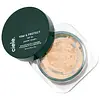What's inside
What's inside
 Key Ingredients
Key Ingredients

 Benefits
Benefits

 Concerns
Concerns

 Ingredients Side-by-side
Ingredients Side-by-side

Titanium Dioxide 12.5%
Cosmetic ColorantZinc Oxide 22.5%
Cosmetic ColorantDimethicone/Vinyl Dimethicone Crosspolymer
Skin ConditioningMica
Cosmetic ColorantPolymethylsilsesquioxane
Calcium Sodium Borosilicate
Butyloctyl Salicylate
Skin ConditioningTridecyl Salicylate
Skin ConditioningNiacinamide
SmoothingSilica
AbrasiveIsodecyl Salicylate
Skin ConditioningOctyldodecanol
EmollientDimethicone
EmollientIsoceteth-10
EmulsifyingIron Oxides
Phenylpropanol
MaskingPropanediol
SolventPhysalis Angulata Extract
Skin ProtectingCaprylic/Capric Triglyceride
MaskingMethicone
EmollientCaprylyl Glycol
EmollientTocopherol
AntioxidantTitanium Dioxide 12.5%, Zinc Oxide 22.5%, Dimethicone/Vinyl Dimethicone Crosspolymer, Mica, Polymethylsilsesquioxane, Calcium Sodium Borosilicate, Butyloctyl Salicylate, Tridecyl Salicylate, Niacinamide, Silica, Isodecyl Salicylate, Octyldodecanol, Dimethicone, Isoceteth-10, Iron Oxides, Phenylpropanol, Propanediol, Physalis Angulata Extract, Caprylic/Capric Triglyceride, Methicone, Caprylyl Glycol, Tocopherol
Ingredients Explained
These ingredients are found in both products.
Ingredients higher up in an ingredient list are typically present in a larger amount.
Dimethicone is a type of synthetic silicone created from natural materials such as quartz.
What it does:
Dimethicone comes in different viscosities:
Depending on the viscosity, dimethicone has different properties.
Ingredients lists don't always show which type is used, so we recommend reaching out to the brand if you have questions about the viscosity.
This ingredient is unlikely to cause irritation because it does not get absorbed into skin. However, people with silicone allergies should be careful about using this ingredient.
Note: Dimethicone may contribute to pilling. This is because it is not oil or water soluble, so pilling may occur when layered with products. When mixed with heavy oils in a formula, the outcome is also quite greasy.
Learn more about DimethiconeThis ingredient is a silicone used to improve the texture of products and absorb oil. It does not get absorbed into the skin.
Like other silicones, Dimethicone/Vinyl Dimethicone Crosspolymer helps condition the skin by creating a barrier. In this sense, it can act as an emollient and trap moisture in.
This ingredient is a type of elastomer.
Learn more about Dimethicone/Vinyl Dimethicone CrosspolymerMica is a naturally occurring mineral used to add shimmer and color in cosmetics. It can also help improve the texture of a product or give it an opaque, white/silver color.
Serecite is the name for very fine but ragged grains of mica.
This ingredient is often coated with metal oxides like titanium dioxide. Trace amounts of heavy metals may be found in mica, but these metals are not harmful in our personal products.
Mica has been used since prehistoric times throughout the world. Ancient Egyptian, Indian, Greek, Roman, Aztec, and Chinese civilizations have used mica.
Learn more about MicaPolymethylsilsesquioxane is a silicone used as a film forming agent.
When applied to the skin, this ingredient creates an invisible film on the surface. This film still allows oxygen to pass through, but prevents moisture from escaping. This can help condition and hydrate the skin. It also leaves a silky feel when applied.
Polymethylsilsesquioxane has not been shown to clog pores. It has been deemed safe to use up to 55%, but most cosmetics use much less.
If you have concerns about using this ingredient, we recommend speaking with a professional.
Learn more about PolymethylsilsesquioxaneSilica, also known as silicon dioxide, is a naturally occurring mineral. It is used as a fine, spherical, and porous powder in cosmetics.
Though it has exfoliant properties, the function of silica varies depending on the product.
The unique structure of silica enhances the spreadability and adds smoothness, making it a great texture enhancer.
It is also used as an active carrier, emulsifier, and mattifier due to its ability to absorb excess oil.
In some products, tiny microneedles called spicules are made from silica or hydrolyzed sponge. When you rub them in, they lightly polish away dead skin layers and enhance the penetration of active ingredients.
Learn more about Silica